Refurbishment and extension of Edwardian cinema funded by council and local donations
Rise Design Studio’s The Lexi Cinema in Kensal Rise, West London, is one of the capital’s only social enterprise cinemas.
The practice was tasked with revitalising 99 square metres of vacant land in the rear car park of an existing Edwardian gabled brick theatre which was being used as a makeshift bar by locals.
The team consulted Brent Council who advised the initial concept, a formal beer garden, would not be possible due to noise constraints, but an enclosed second screen might be feasible.
Rise envisaged an environmentally-driven second cinema and bar to accommodate the growing programme and help drive revenue for The Lexi’s charity efforts.
Brent Council were instrumental in supporting the project - titled The Lexi Hub - through continuous advisory and dialogue, ensuring planning policy and community needs were balanced.
Following a successful two-year fundraising campaign including grants from the Brent Neighbourhood Community Infrastructure Levy, a contribution of £50,000 from the Mayor of London’s community fund, and local donations, a planning application was submitted, backed by more than 1,200 local signatories, and construction began in July 2020.
Located in a residential area, The Lexi Hub required a sensitive design approach to exercise consideration to the close neighbouring homes adjacent to the site.
The architects designed a sunken extension, digging down 1.5 metres to reduce the new Lexi Hub’s massing, ensuring the extension sits only 2 metres above the neighbouring garden wall while also enabling level access from the car park. This strategy conceals a foundation of reinforced concrete, services and thick acoustic insulation.
The Lexi Hub seats up to 30 viewers, with flexible accessible space for two wheelchairs or panel discussions and events, and features a new bar and snack counter.
The scheme reduced visual bulk further by echoing the neighbouring parapet roofs in the form of The Lexi Hub, creating a solid superstructure of in situ cast concrete arches which lean away from neighbouring gardens at a 45-degree angle. Reclaimed London stock brick was used to anchor the extension in its setting and buffed stainless steel to reflect the sky above.
A green wildflower roof replaces biodiversity lost during the construction process at a higher level. It also provides an added level of insulation, and regulates rainwater drainage on site.
Choosing sustainably-minded options where possible, The Lexi Hub is sealed for airtightness to minimise heat loss and energy usage and also features a mechanical ventilation heat recovery (MVHR) system. The Lexi is one of the first cinemas in the United Kingdom to regulate temperature and air quality through MVHR as opposed to air conditioning.
During the design phase, an electrical fire caused major smoke damage to the original cinema, Screen One, requiring a complete refit of the existing interiors. Original period details were salvaged including the pine parquet flooring, which was restored and reinstated to the main entrance and ticket office.
The team saw the accident as an opportunity to create a new interior language throughout the cinema’s spaces. Raw blush plaster and black walkways act as wayfinding devices, directing patrons from the Box Office down a glazed side extension to a newly refurbished bar, and onto Screen Two.
Project details
Architect RISE Design Studio
Form of contract/ procurement route JCT Intermediate
Client The Lexi Cinema
Structural engineer Tyrone Bowen, CAR Ltd
M&E consultant Enhabit
QS RISE Design Studio
AV consultant Omnex Pro Film
Cinema technical specialist Sammy Patterson
Screen + projector pod specialist Powell Cinema Engineers Ltd
Intruder alarm specialist NSS Security Solutions
IT specialist Blashford IT Support
Landscape consultant Dan Shea Garden Designer
Acoustic consultant Munro Acoustics Limited
Project manager RISE Design Studio
Approved building inspector Quadrant
Main contractor Capital Building Contractors (London) Ltd
Party wall surveyor Richard Egan, Osprey Building Consultants
Sustainability consultant Kaspar Bradshaw, Enhabit
Wayfinding designer Joan Zalacain, Zalacain
CAD software used ArchiCAD



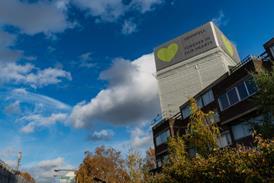





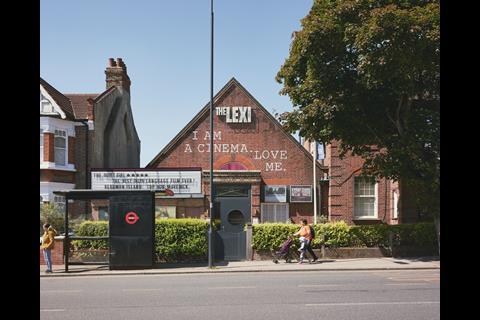
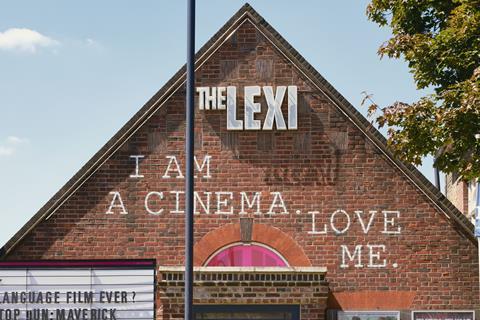
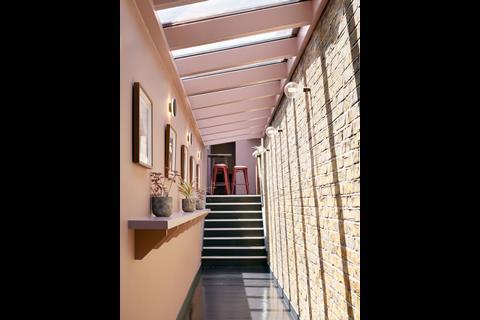
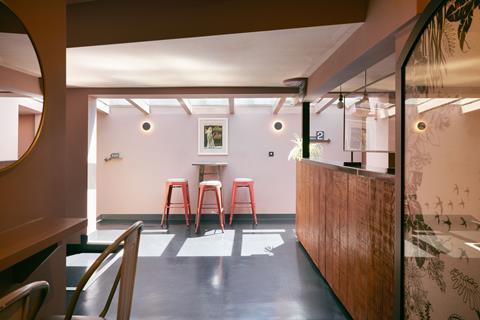
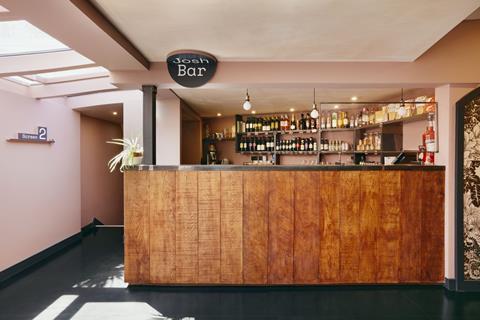
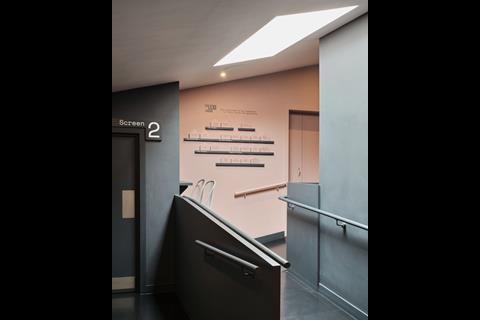
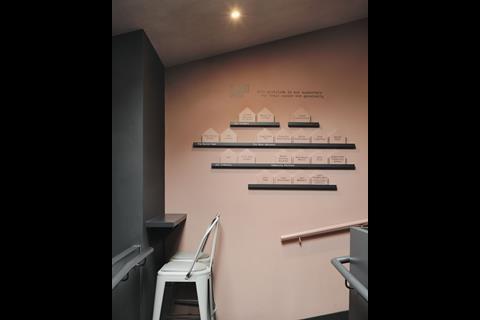
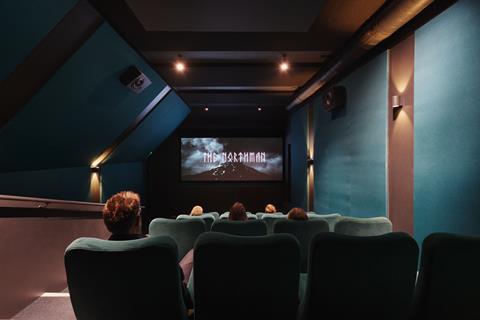
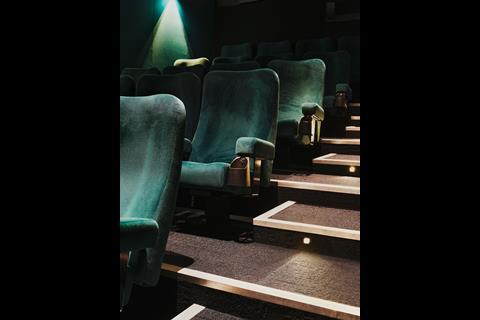
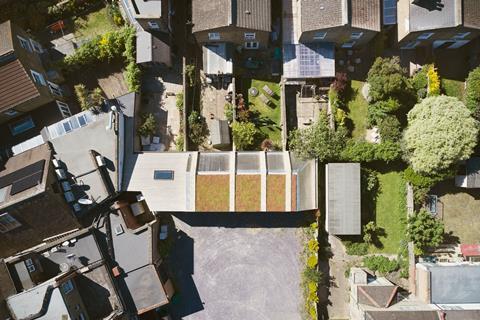


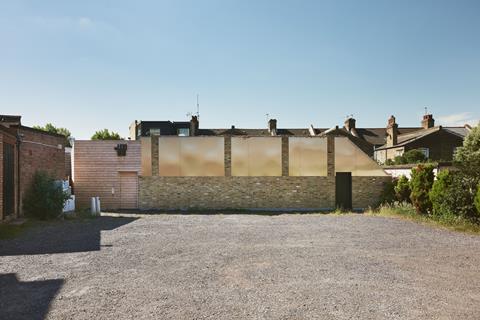

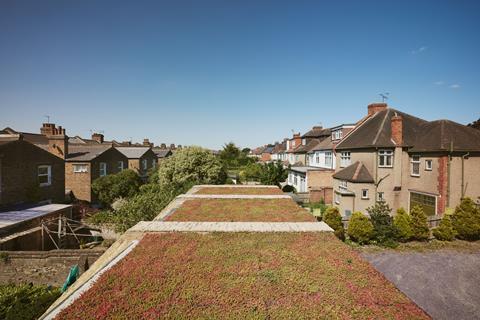


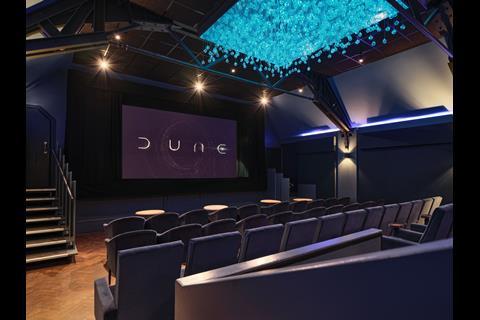








No comments yet